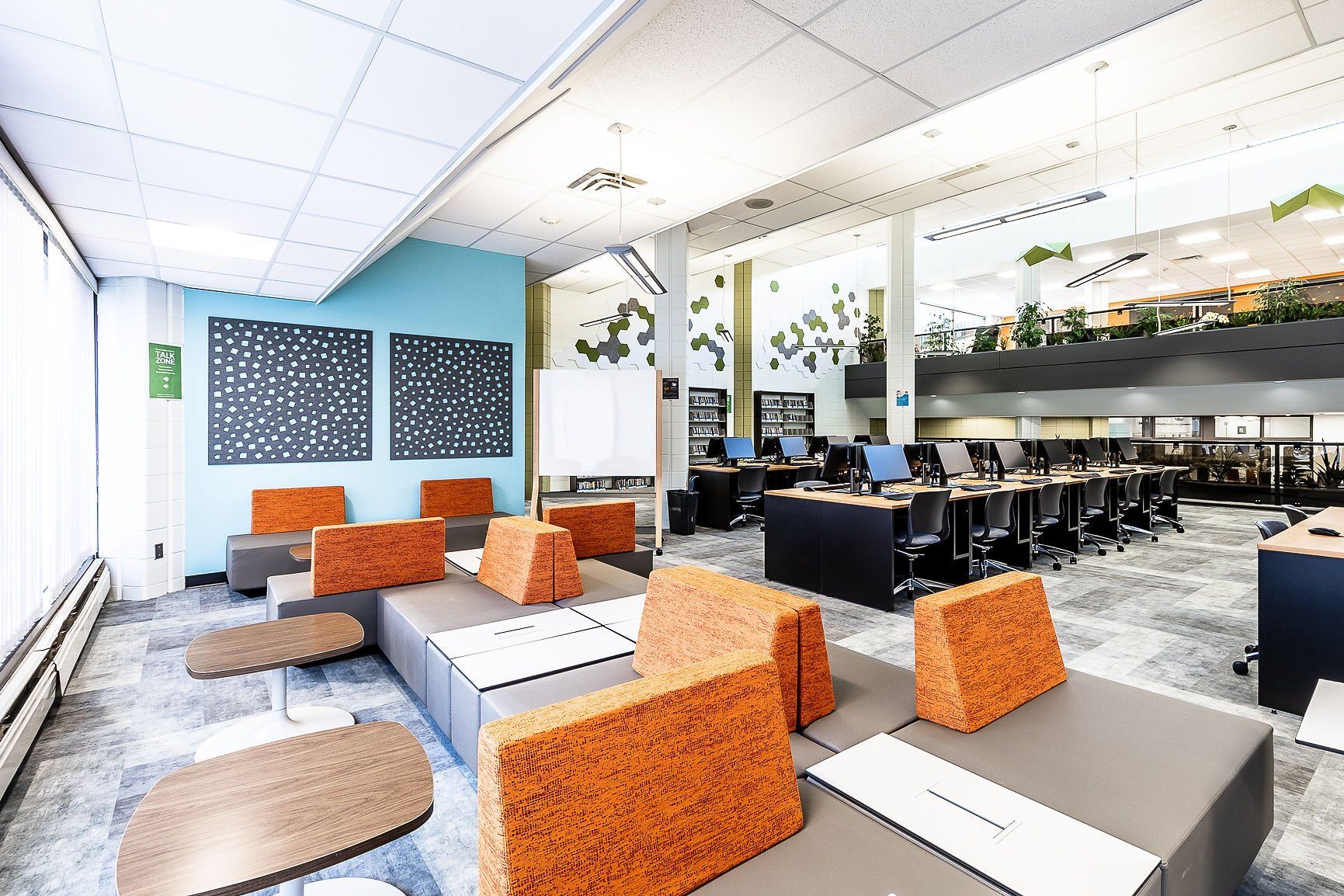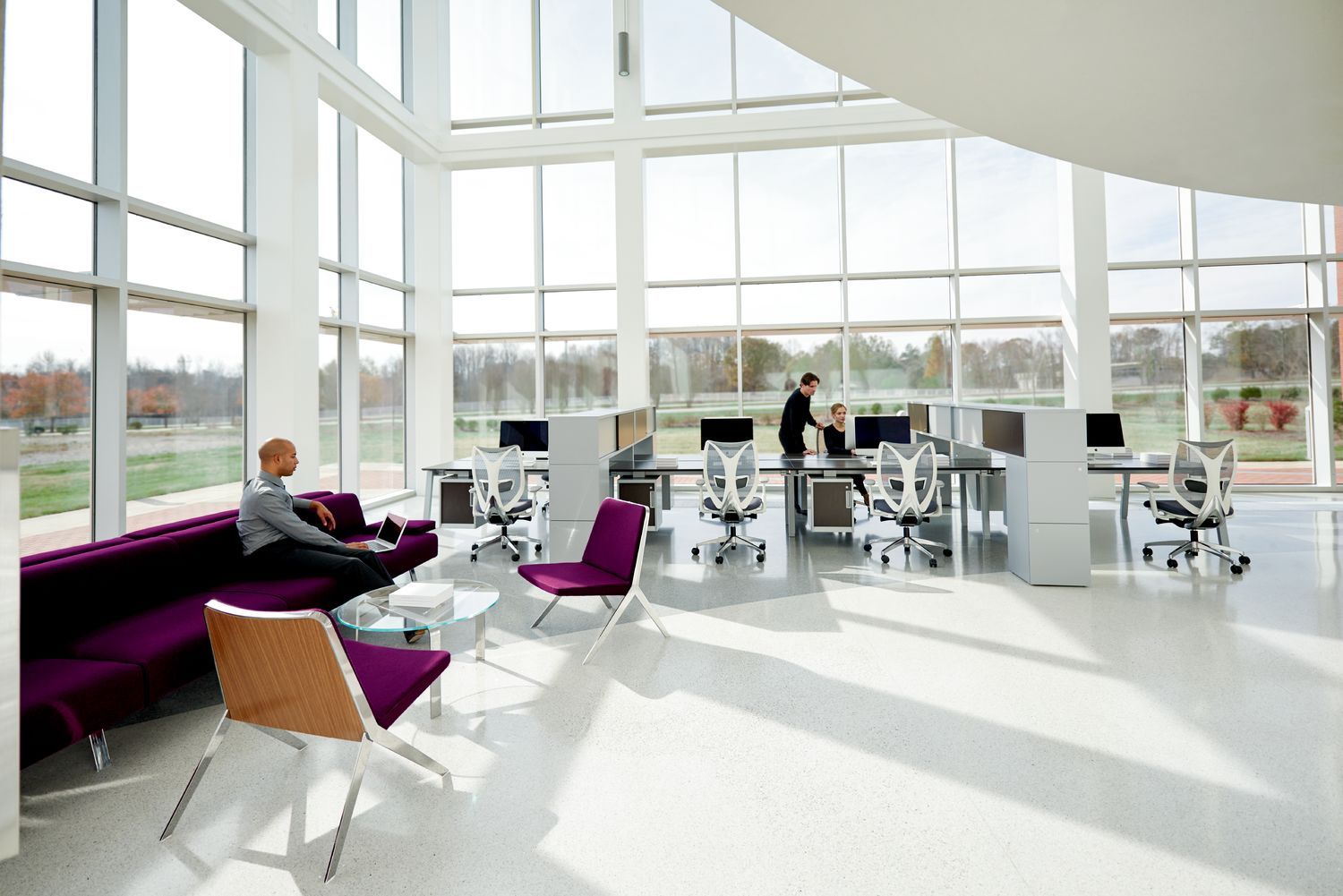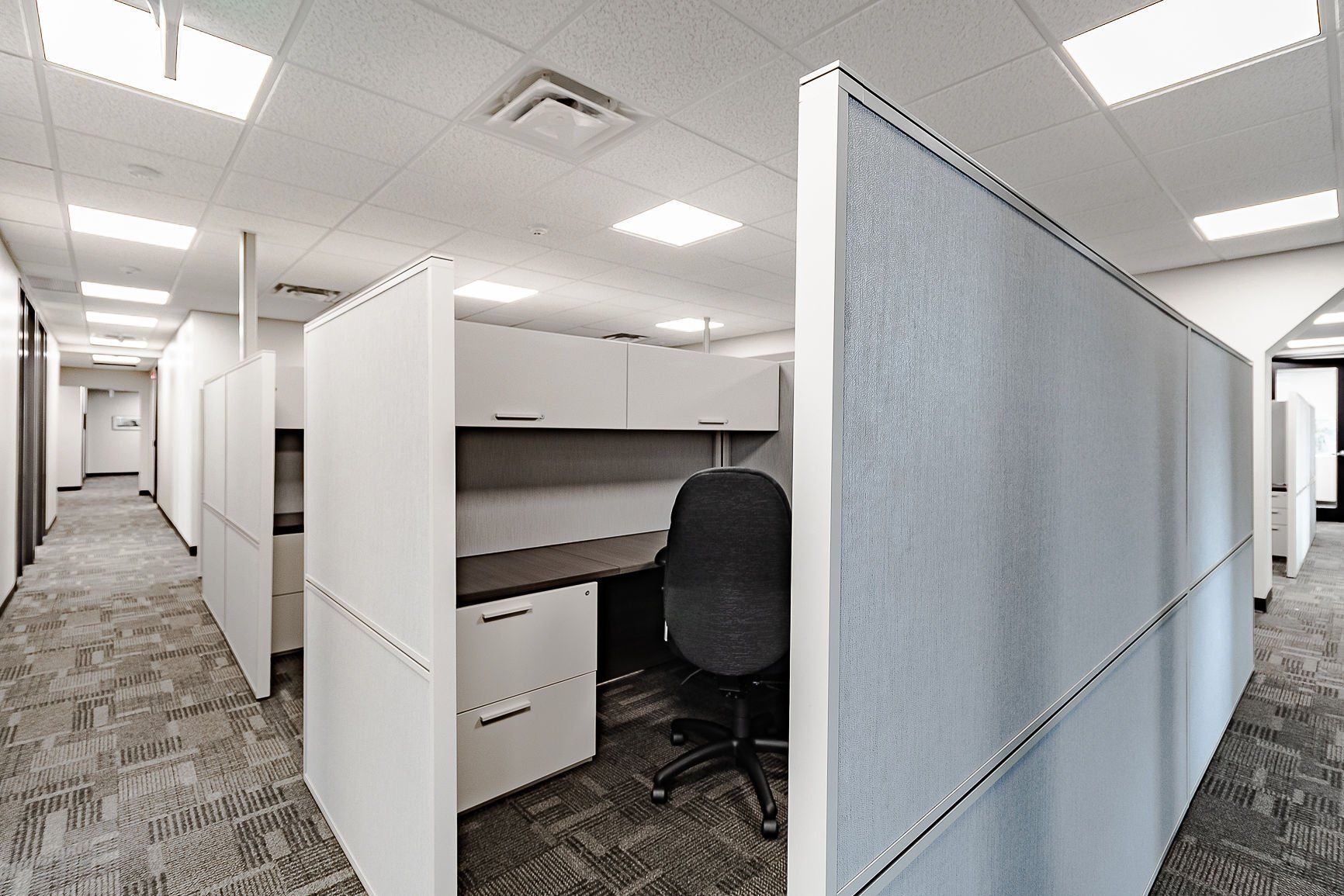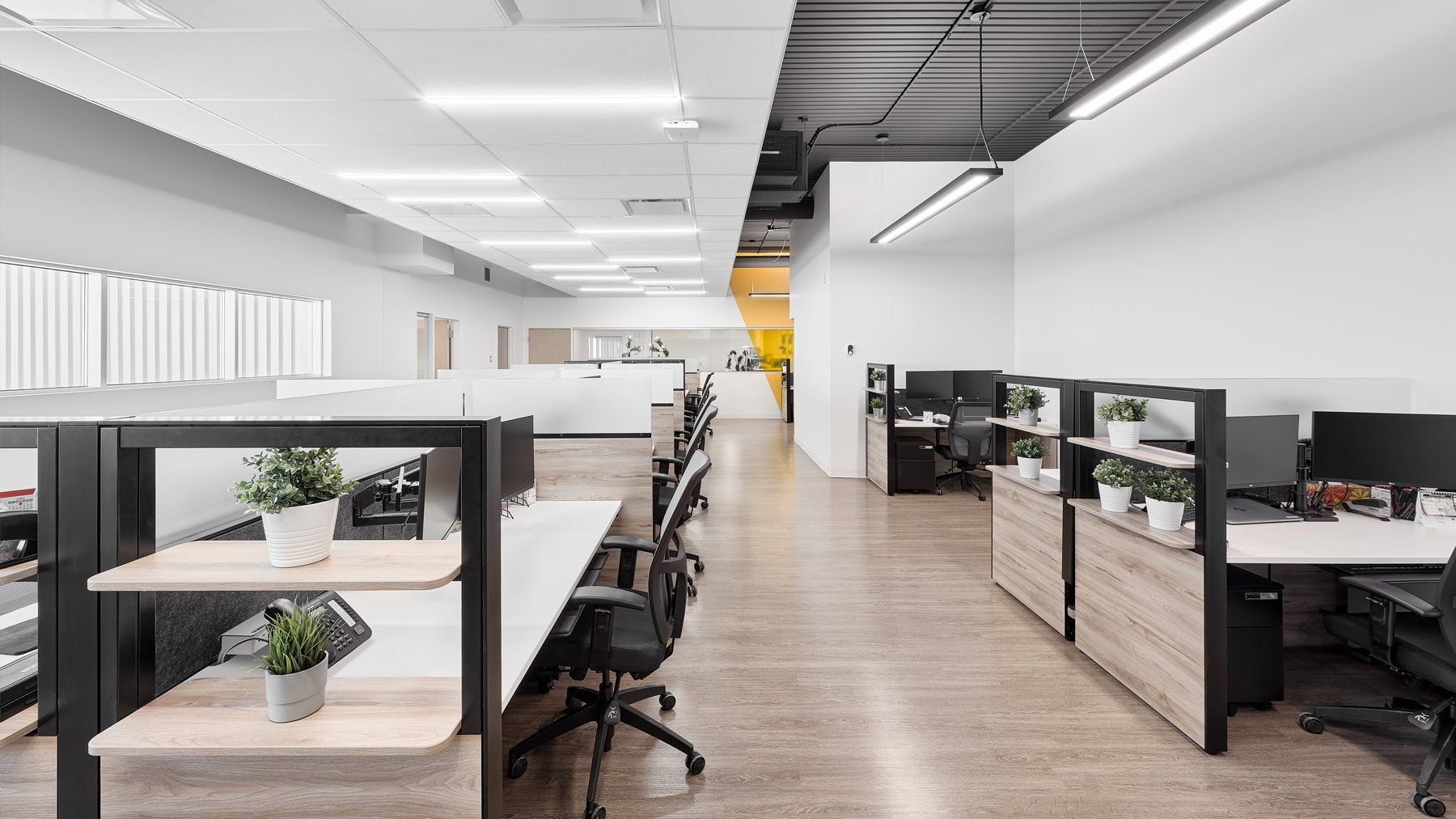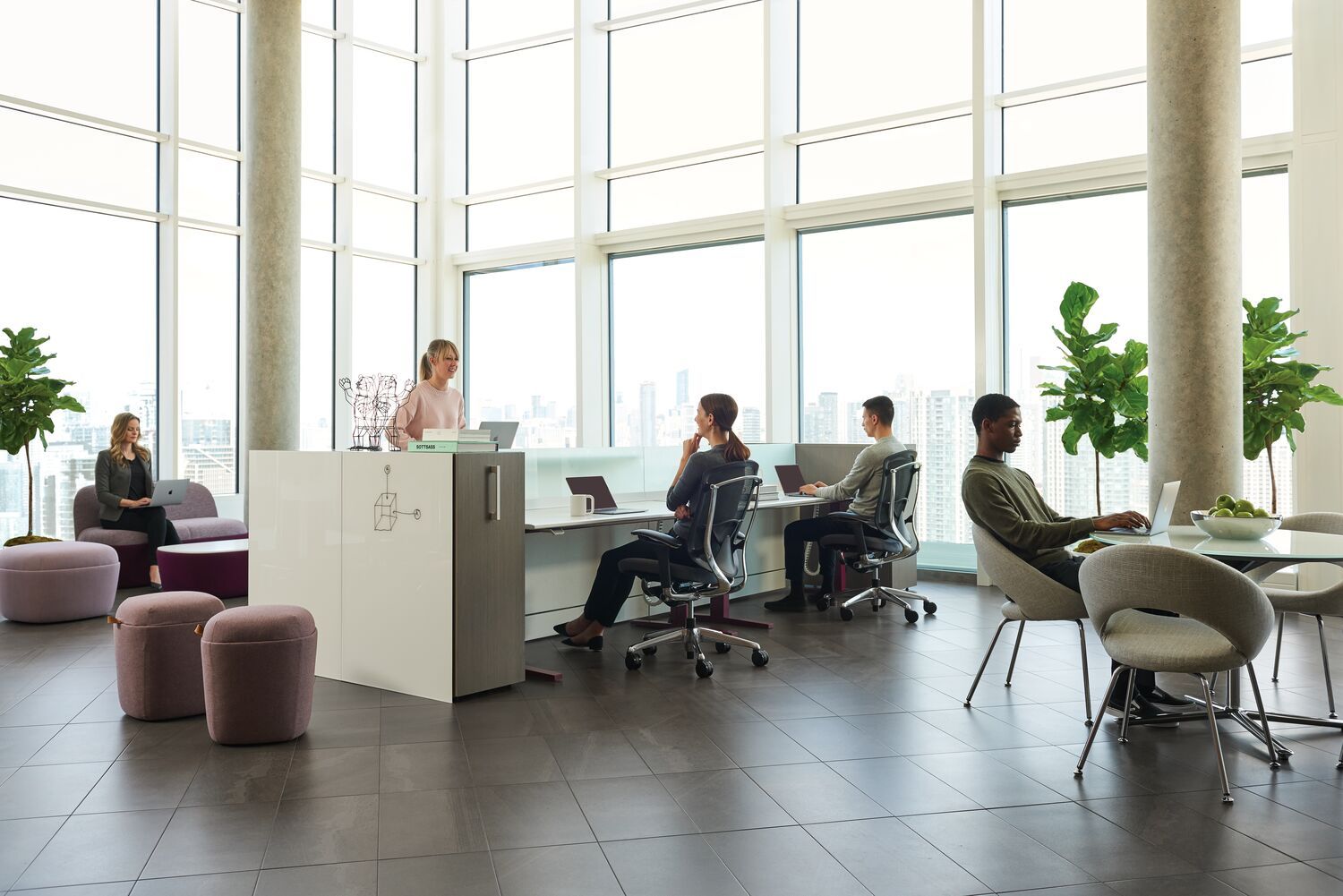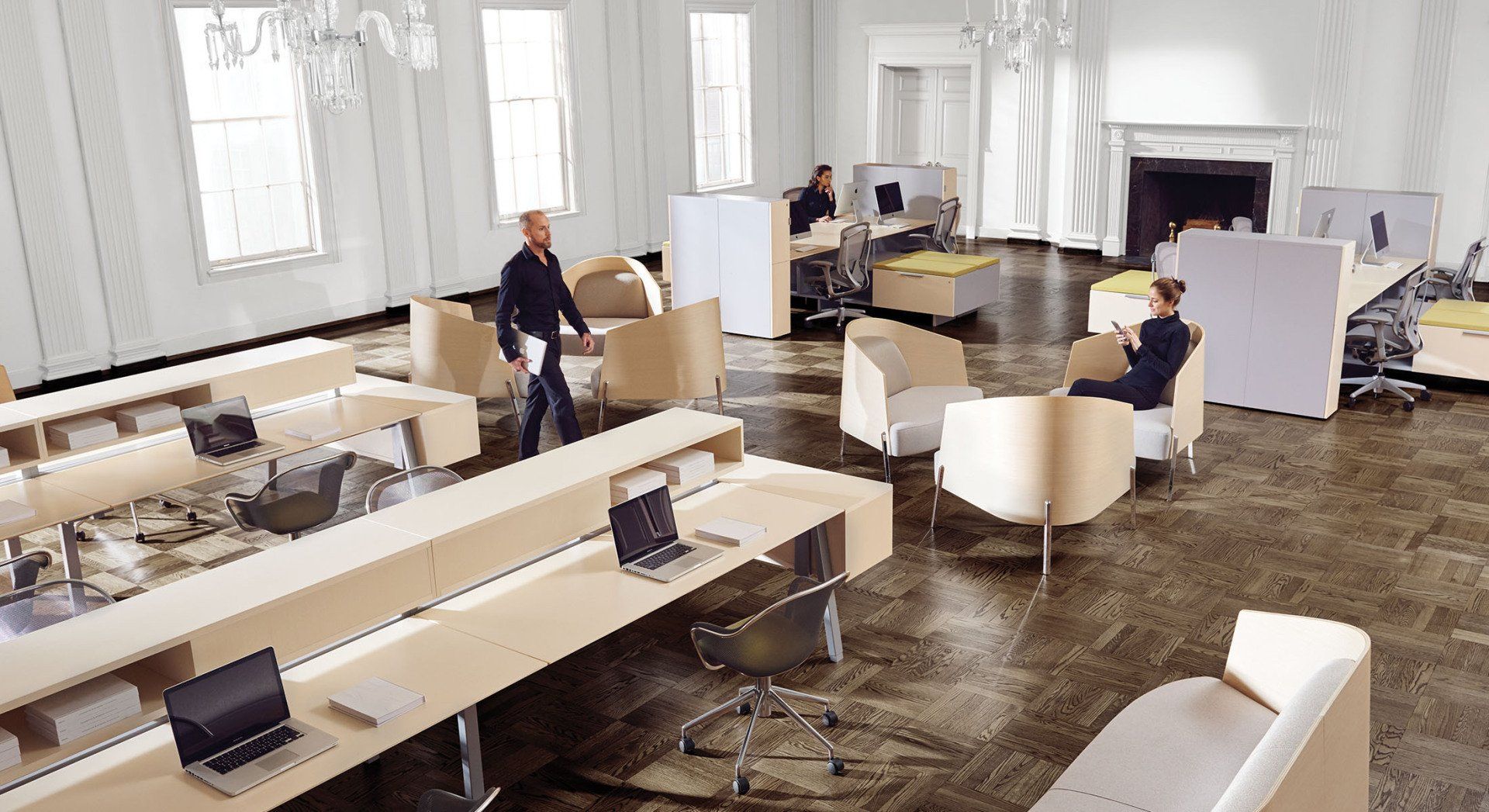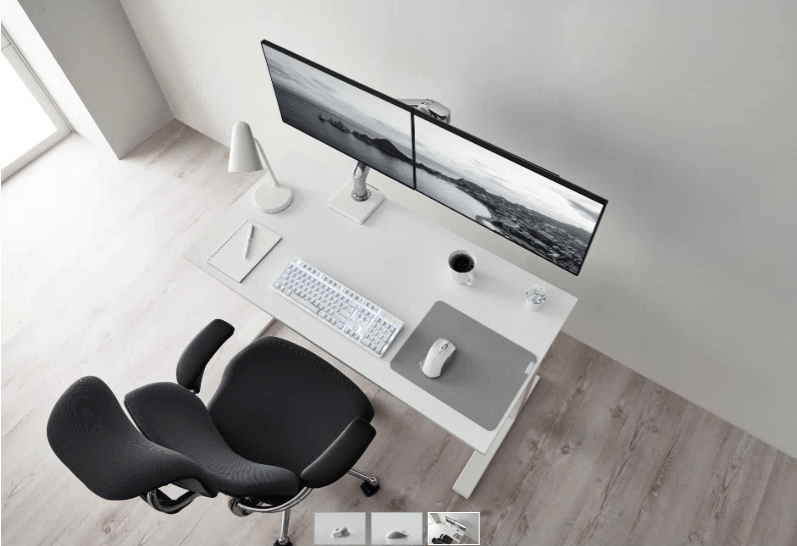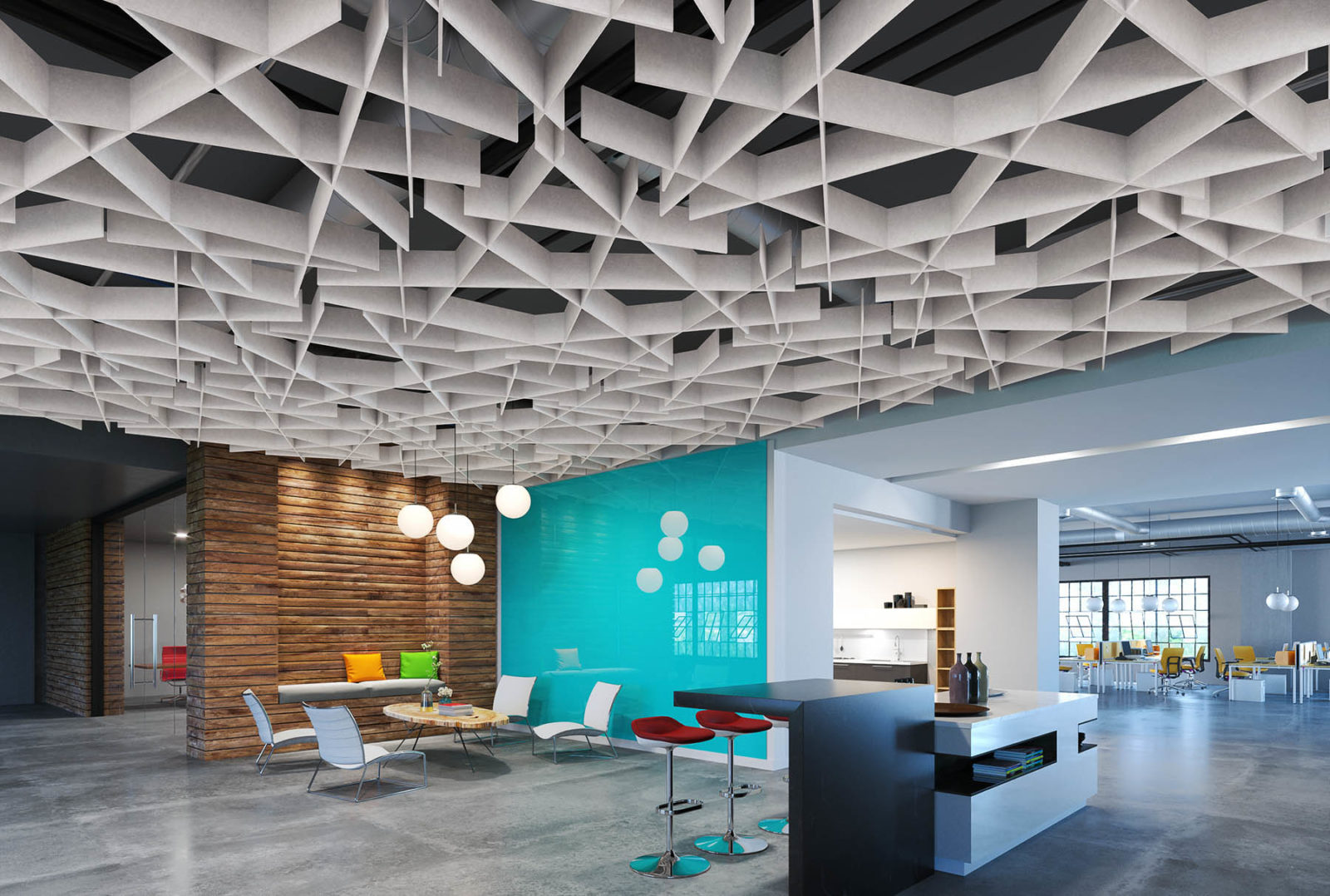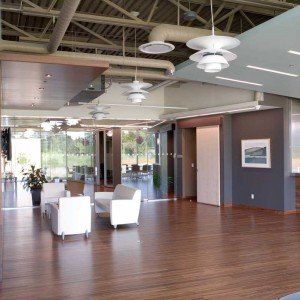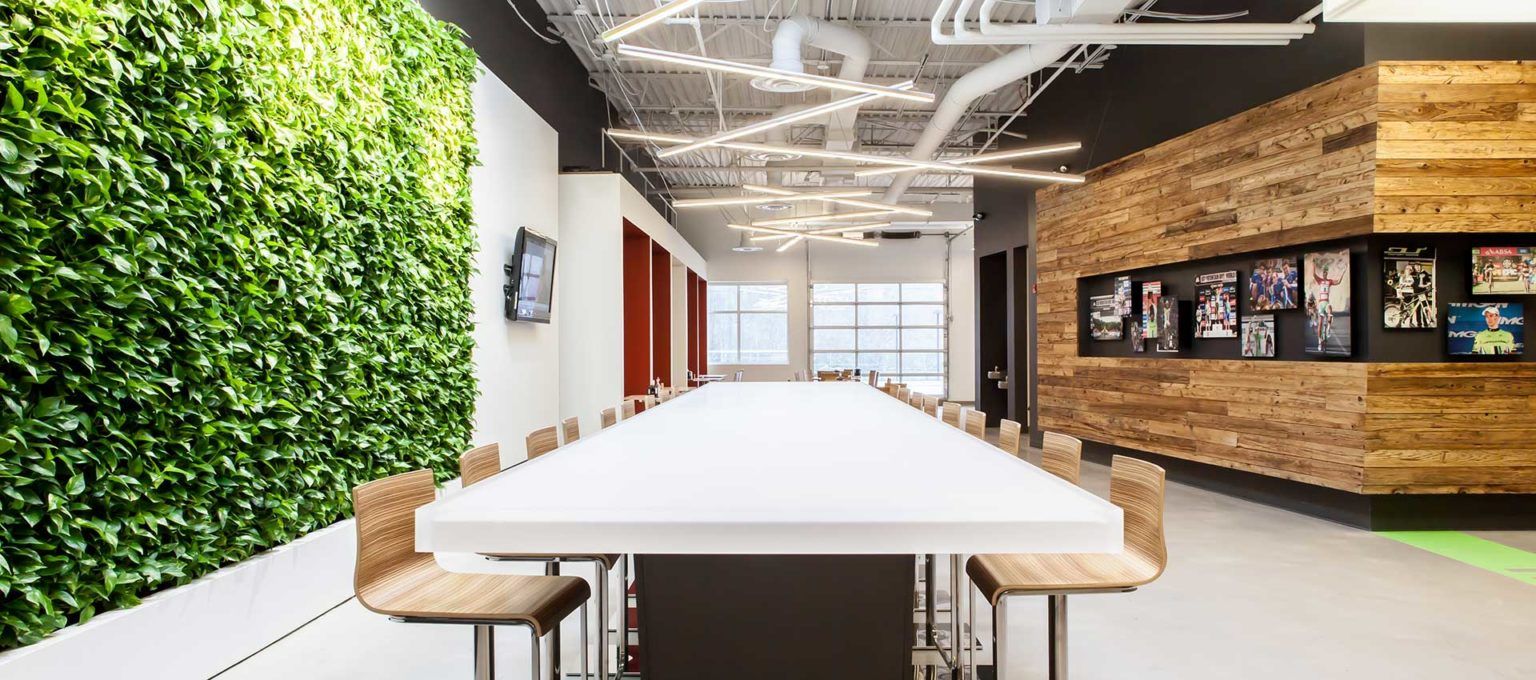Office Acoustics: Why it matters and how to manage it
Photo: Teknion
Dedicated Loud and Quiet Work Zones
A simple and cost effective way to reduce the impact of noise in the workspace is to create an acoustic plan and redefine the furniture layout into dedicated work zones. Separate your active workgroups and office equipment from your low energy workgroups to create loud and quiet zones. This will reduce acoustic disruptions from internal noise and increase speech privacy.
Photo: Teknion
Sound Absorbing Materials
Workspaces with multiple hard surfaces will contribute to noise reverberation from footsteps and sounds of voices which can cause high levels of ambient noise and contribute to additional stress for employees.
By adding soft surfaces within your space, you can reduce the reflection of sound while contributing to the overall branding and aesthetic design of the office.
Options such as acoustic panels, curtains, wall coverings and greenery can be easily installed on walls in areas where active communication is present. Modular walls and screens can be incorporated to create quiet areas where privacy and concentration are required.
Photo:Teknion
Furnishings
An open-concept office allows employees flexibility and choice to work in a space that is comfortable and productive. Modular spaces and furnishings can also provide acoustic value to assist with sound control.
Many furnishings are designed with acoustic materials and sound-absorbing panels positioned strategically where they will be most useful. Soft seating and sofas, as well as chairs, filing units, desks and shelving can be purchased and designed to help absorb sound and provide essential acoustic value.
Ceilings and Floors
Acoustic ceiling tiles are a great way to reduce the reverberation of sound in spaces. However, many modern spaces are now opting for tall open ceilings with exposed ductwork, beams and steel joists. In these situations, ceiling mounted acoustic panels and baffles are a great option without detracting from the lighting or aesthetic style.
Flooring is also essential in the role of reducing sound movement. Carpeting, area rugs and other materials such as cork flooring tiles are considered sound-sensitive and can provide effective sound dampening and beneficial office acoustics.
Sound Masking
There are many acoustical solutions that work toward the reduction of noise and unwanted sounds. Sound masking is an innovative system which adds specific regulated sound through speakers which can be installed systematically throughout a space. The speakers produce "white noise" as a background sound which helps cover a spectrum of speech or excessive silence. This system is able to adjust to the noise levels within an office, increasing or decreasing volume as needed.
Many building standards now include acoustics and the reduction of noise in the workplace to improve the wellbeing of the users. A well-designed acoustical workplace will feel comfortable to employees and production and collaboration will be enhanced.
Good workplace acoustics should be on the design checklist for every office space to benefit clients and employees.
Contact Us
